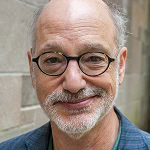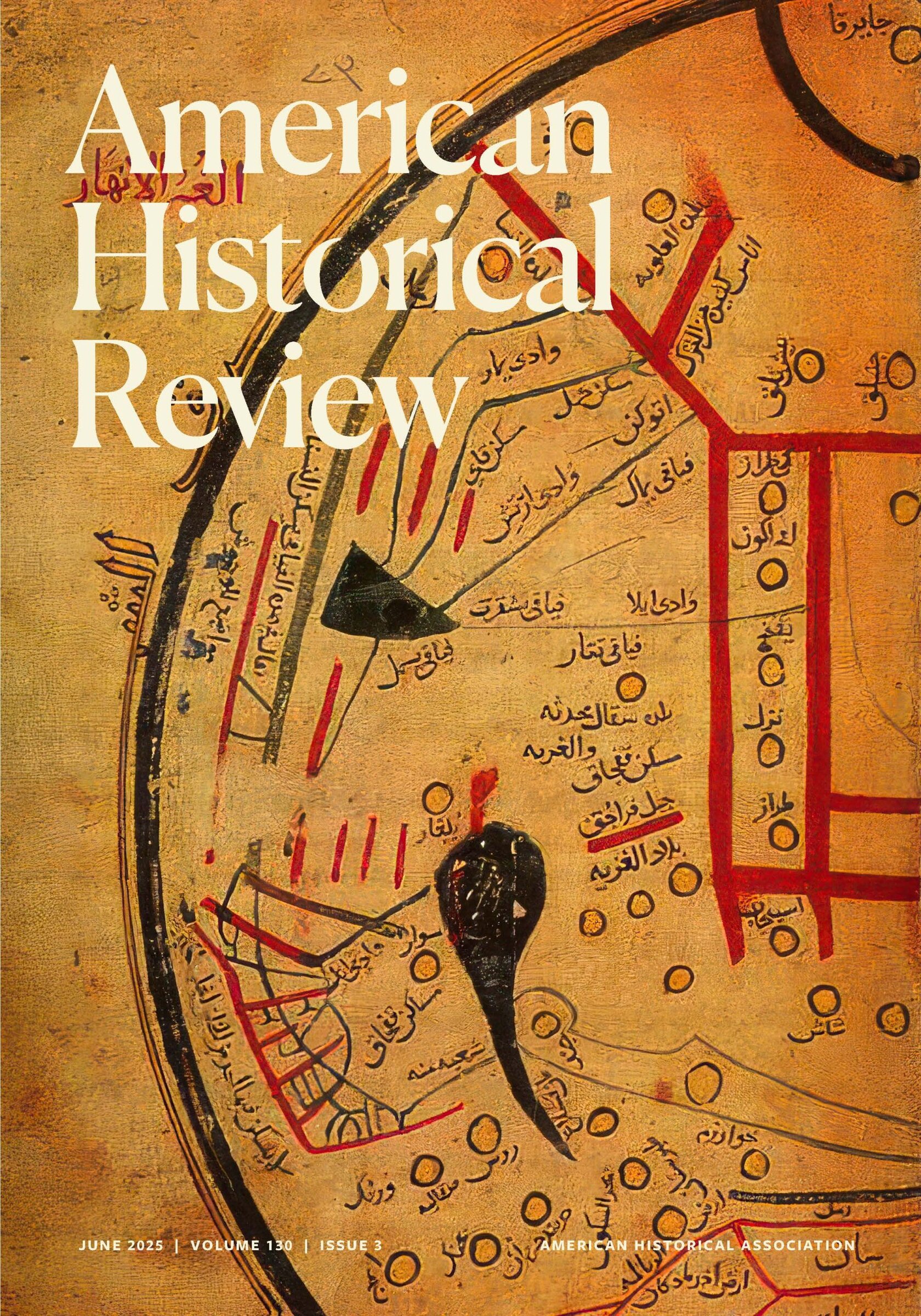-413x600.jpg)
Cape Coast Castle was originally a commercial fortress, built in 1653 by the Swedish African Company, which was engaged in the timber and mineral trade along Africa’s Gold Coast. After changing hands several times as the European powers struggled for control of the region’s developing slave trade, it was rebuilt by the British in the 1670s as the headquarters of the Royal African Company, becoming one of numerous “slave castles” in what is now Ghana. From the chambers in its underground dungeon, captured slaves were herded through the infamous “Door of No Return,” to be loaded onto ships for transport overseas. When descendants of those slaves were welcomed to Ghana as part of the country’s first “homecoming” celebration in 1998, they were invited to enter the castle through that same door, in a symbolic “return.” In “History in the Dungeon: Atlantic Slavery and the Spirit of Capitalism in Cape Coast Castle, Ghana,” Andrew Apter uses the history of a West African coastal deity associated with Cape Coast Castle and Atlantic slavery in Ghana to gain insights into Afro-European encounters associated with the rise of the Atlantic economy and the development of Cape Coast government and society. “Door of No Return,” 2009 photo by ZSM. Wikimedia Commons.
For most of its publishing history, the American Historical Review has led off its first issue of the year with the address delivered at the AHA’s annual meeting by its outgoing president. In this year’s Presidential Address, Patrick Manning offers a timely brief for a historical investigation on a global scale of the causes of and conditions for social and economic inequality. Three articles follow, one on the slave trade, another on capitalism in the American West, and a third on German Protestant missionaries in China in the early part of the 20th century. A somewhat unusual review essay focuses on a single website run as a commercial concern. “In Back Issues” recalls articles from 100, 75, and 50 years ago. Eight featured reviews are followed by our usual extensive book review section.
Patrick Manning’s Presidential Address, “Inequality: Historical and Disciplinary Approaches,” presents an ambitious prospectus for explaining the vast and persistent economic differences around the world, a subject that has increasingly attracted the attention of academics and the public alike. Manning acknowledges the many scholars who have tried to make sense of this phenomenon, but he is critical of some notable recent efforts—such as the well-known work of Thomas Piketty—for their narrow focus on economic factors alone. Instead, he proposes an interdisciplinary research project of vast proportions that would entail significant institutional support, the cooperation of teams of researchers, and the marshaling of large chunks of data. Manning insists that any meaningful approach must go beyond questions of income and wealth and rather account for differences, inequities, and hierarchies of a social, political, and cultural nature, as well as the “disparities resulting from varying conditions of health and climatic experience.” “The proposal for a world-historical research campaign on inequality may seem to be of an enormous and perhaps impossible scale,” he acknowledges. But, he adds, “it is both feasible and necessary.”
In “History in the Dungeon: Atlantic Slavery and the Spirit of Capitalism in Cape Coast Castle, Ghana,” Andrew Apter focuses on Nana Tabir, a West African spirit and coastal deity associated with Cape Coast Castle and Atlantic slavery in Ghana. Apter examines Tabir’s history less as a record of objective documentation than as a generative locus of insights into the past—in this case, of Afro-European encounters associated with the rise of the Atlantic economy and the development of Cape Coast government and society. For Apter, Tabir epitomizes a range of African coastal “fetishes,” extending from Senegambia to Luanda, that register European contact and trading relations in their ritual iconographies and forms of spirit possession. What distinguishes Tabir within the growing literature on the historicity of such ritual archives, however, is the depth of European documentation, going back to 1601. Tabir may look like an invented tradition “customized” for tourists, but he has been around for centuries, changing forms and places, sacralizing spaces, and shaping pathways of ritual reciprocity to empower chiefs and devotees. His history is less a story to be told than a past that he both mystifies and evokes: a past of migration and settlement, gold and slaves, coastal military companies, and the making of a creole culture through the mimetic appropriation of European signs.
In “To Coddle and Caress These Great Capitalists: Eastern Money, Frontier Populism, and the Politics of Market-Making in the American West,” Noam Maggor revisits the incorporation of the West into the economic orbit of the United States as a contested and contradictory process, analogous in crucial ways to turbulent transitions in other peripheral regions in the world economy. The essay attends in particular to the relationship between the penetration of financial networks into the deep interiors of North America and the accelerated process of state formation that facilitated and regularized that financial movement. Maggor explores the deliberate efforts of the financial elite of Boston—the second-largest financial center in the United States—to redeploy capital toward new ventures in the trans-Mississippi West. He sketches the growth of the Boston-owned stockyards of Kansas City, illustrating the capacity of eastern financiers—like financiers elsewhere around the world at the time—to reinvent major industries, establish new urban centers, set large populations in motion, and revolutionize the ecologies of entire regions.
Furthermore, the essay interrogates the intimate links between the migration of capital from the eastern United States and the emergence of western political institutions. It analyzes constitutional conventions throughout the West—in Colorado, Montana, Wyoming, Idaho, the Dakotas, and Washington—that occasioned the transformation of these federally controlled territories into semi-sovereign states. Finally, Maggor’s analysis focuses on three key economic issues that best crystalize the problem of political jurisdiction in an interconnected economy—water rights, corporate regulation, and industrial relations—and then, in more general terms, on the three themes of distribution, legibility, and spatiality.
In the early part of the 20th century, communists, liberal internationalists, and Christian missionaries each considered how to make their “universal” ideology local or “indigenous” to the culture it encountered. Focusing on German Protestants and Chinese Christians, Albert Monshan Wu, in “The Quest for an ‘Indigenous Church’: German Missionaries, Chinese Christians, and the Indigenization Debates of the 1920s,” examines the debates over the “indigenous church” within Christian missionary circles in China. The two groups shared much in common: both saw the indigenous church as a potential bulwark against the global dominance of American and British missionaries. While sharing common geopolitical aims, however, they diverged on crucial theological issues: German missionaries saw in the indigenous church the potential for inculcating orthodox Lutheranism, while Chinese Christians saw it as a way to liberate Chinese Christianity from the denominational squabbles in Europe. By examining these disagreements, Wu highlights the unstable and indeterminate nature of the “indigenous church,” a fact often overlooked by church historians. He also contextualizes the indigenization debates within broader international trends, such as the rise of competing secular international ideologies like communism.
The last article in this issue, a Digital History Review Essay, is somewhat unusual. In “Thematic Digital History Archives and Their Wicked Problems: China, America, and the Pacific,” Eileen Scully reviews Adam Matthew’s ambitious new generation of curated, thematic, multi-archival, online digital collections. What is unusual is that this is a commercial project—Adam Matthew is an independent subsidiary within the SAGE Group—aimed at scholars and students alike. These new collections confront a predicament already familiar to digital humanists: Where do inherently expansive projects begin and end, and what are appropriate criteria for judging their quality and completeness? In commercially curated, thematic digital archives, what is the logic of inclusion and exclusion? How do users—undergraduates in particular—make sense of the remixed materials they encounter in these privatized virtual spaces?
Scully frames these questions as “wicked problems,” using language originally formulated in the 1970s and recently revised by organizations, communities, and project managers grappling with social complexity and fragmentation. Although “wicked problems” elude definition and resist trial- and-error approaches, they can be “tamed” through sustained, intentionally argumentative conversations. Adam Matthew’s reliance on academic consultants and its growing interest in public-private partnerships provide fertile ground for initiating this sort of conversation. Acknowledging that it has always been a struggle to take on historically invaluable but commercially unprofitable archival projects, Scully encourages professional historians to make better use of the new realities, beginning with a fuller conversation about the role and responsibilities of academic consultants to vendors like Adam Matthew.
This work is licensed under a Creative Commons Attribution-NonCommercial-NoDerivatives 4.0 International License. Attribution must provide author name, article title, Perspectives on History, date of publication, and a link to this page. This license applies only to the article, not to text or images used here by permission.



